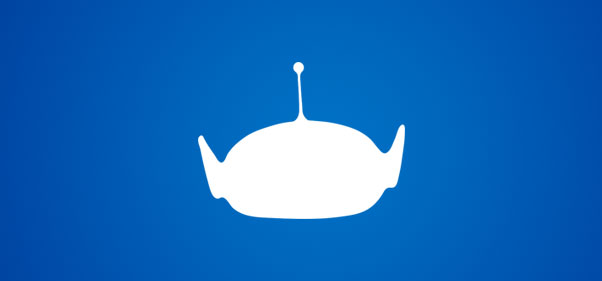http://www.mtv.com/shared/movies/features/p/pixar_site_visit_031505/
Mr. Incredible greets you at the door with bright eyes and a determined grin; from the balcony, Sulley and Mike glance over the railing to see who’s visiting; Woody and Bo Peep hang out by the bathroom doors.
OK, they are the bathroom doors. You have entered Pixar headquarters, a breathtaking multimillion-dollar office building where selecting the proper restroom hinges on your ability to distinguish the genders of silhouetted cartoon characters. The lobby, a wood-and-steel expanse reminiscent of an airplane hangar, is filled with worker ants playing foosball, filling their bowls with free cereal and discussing character design as they ride side-by-side on scooters.
The aforementioned bathrooms symbolize much more than Pixar’s belief that every character is a household name. When Chairman and CEO Steve Jobs oversaw the construction of the Emeryville, California, headquarters, he insisted that the architects create only one restroom area for their 800 employees. Reasoning that the only time an employee emerges from their “safe place” is when nature calls, Jobs wanted to promote congregation in the lobby. To the delight of countless weak-bladdered workers, the architects changed his mind with promises of a mailroom, cafeteria and game room all circling the entryway.
Luckily, the man isn’t talked out of his decisions very often. Ten years ago, Jobs and a team of like-minded visionaries released the original “Toy Story,” offering a first peek into movies that place equal emphasis on story, animation and technology. In the decade since, Pixar eclipsed that initial promise with “A Bug’s Life,” “Toy Story 2,” “Monsters, Inc.” and “Finding Nemo”; then, with 2004’s “The Incredibles,” it hoped to keep its streak alive while pushing aside the fish and toys to make way for humans.
“Very scary. And if you don’t think it was easy to get freaked out about that, it was,” said Brad Bird, the mild-mannered writer/director of “The Incredibles.” “The problem is that if you think about the fact that the previous five films have all been successes, then you’ll just hide in your house and never come out. You have to forget about that, because in order to make those films, those guys forgot about it. And what you have to say is: ‘Am I excited about my story? Am I excited about what my film could be?’ Yeah, bring it on!”
In a toy box of a building that has distinctive, glassed-in rooms for “office shopping,” tiny homes instead of cubicles and a paper-airplane takeoff zone, Bird somehow manages to be the most creative element. Bird admits that after his traditionally drawn 1999 film “The Iron Giant” dazzled fellow animators but collapsed at the box office, he had become disenchanted with Hollywood. “Although the film wasn’t widely seen by the public, it was widely seen within the film community,” Bird said of “Giant.” “There were people coming at me wanting me to do stuff, which was a wonderful position to finally be in.”
That’s when his gaze turned toward the Bay Area. “I had a late-night talk with Tony Fucile, who is a co-character designer for ‘The Incredibles’ and one of the animation supervisors,” Bird recalled. “He said he had never worked in computer-generated animation, and I hadn’t either. We talked about all the great things about computer animation, and I said, ‘OK, after 15 minutes of singing Pixar’s praises … let’s talk about what we would change.’ “
“Brad, of course, his experience was hand-drawn animation,” remembered Fucile, a Bird collaborator since his “Amazing Stories” TV work in the 1980s. “There was a possibility of [“The Incredibles”] being hand-drawn when we first started working on it. After [Pixar] saw ‘Iron Giant,’ Steve Jobs especially was hungry to get him up here.”
Two hundred sixty million American box-office dollars and one Best Animated Feature Oscar later, Bird and Fucile’s tale of superheroes and the suburbs arrived this week on a snazzy two-disc DVD that furthers Pixar’s primary goal: to please kids and their parents simultaneously. Take, for instance, the brand-new short “Jack-Jack Attack” that lets us peek in on the unseen back-story that has babysitter Kari watching Bob and Helen’s uncontrollable infant. When the teenager opens the door for her replacement and finds the super-villain Syndrome (Jason Lee) standing there, she eyeballs his costume and asks what the giant “S” on his chest stands for. “For ‘sitter,’ “ he replies. “Yeah, ‘sitter.’ Originally I was going have the initials for baby-sitter, but then I would’ve been going around wearing a big ‘B.S.,’ and you understand why I couldn’t go with that.”
The parents get a giggle, and the reference soars so far over kids’ heads that you’d think Mr. I himself had tossed it up there. Bird supervised the creation of “Jack-Jack,” as well as other disc features that include bloopers and outtakes (many of the character-with-no-pants variety), an alternate opening that has Bob severing his own fingers and a hilariously crude “lost” cartoon with Frozone whitewashed and standing beside a bunny sidekick named Mr. Skipperdoo. The jam-packed features also include commentaries, behind-the-scenes looks at how the movie was made, “top secret” files on all the dim superheroes that were put out of commission by Syndrome and over a dozen Easter eggs waiting to be unearthed.
The DVDs seem likely to set some super sales records of their own, which will help ease the uncertainty of what lies ahead. As Pixar’s partnership with Disney winds down (the upcoming “Cars” is expected to be their final co-production), the CGI animation innovators continue to search for a new distribution partner. Even Mr. Incredible would envy the position of strength from which the company negotiates its next deal, one that may be as imaginative as their headquarters.
Making your way up to the second floor, you enter an exact replica of the trophy room that belongs to the patriarch of the superhero family. Everything you remember from the movie is there: the shotgun with its barrel tied in a knot; the newspaper proclaiming Mr. Incredible’s heroism; a plastic canister labeled “bullets that bounced off my chest,” and an array of three-cent commemorative superhero stamps. Every time Pixar begins a new movie, it designs a room that its people can walk into to immerse themselves in the fictional world they’re creating.
In the animation offices there’s a village of tiny homes, each one individually decorated; walk past the castle and take a left at the old Chuck E. Cheese robots to get to the tiki-hut area. An animator whose name begins with “D” has simply spray-painted his name across his door; another more enterprising soul has turned his turf into a bar area, complete with chandelier and stage (the band jams on Fridays). Now you’re beginning to see why this group had so much fun skewering Bob Parr’s 9-to-5 misery.
Pixar encourages what it affectionately calls “plus-ing,” as in the opposite of “minus-ing.” In short, you can add to a person’s work, but you must never criticize. “A lot of what we do is suckage management,” one of the DVD designers said. “That shot sucks, but if you do it this way, it sucks less.”
Leaving through the front door, the statue of Mr. Incredible once again looks you in the eyes. He’s surrounded by his family, and the group is ready to unleash its eccentric powers while taking on whatever outside danger might come its way. The family at Pixar seems every bit as strong as they look to “Cars” and beyond, determined to suck less than ever before.
“Check out the link to see some awsome pictures of Pixar, or if you want a cool guided tour of Pixar watch the tour on the Monsters Inc. DVD.”
Last modified: March 20, 2005
